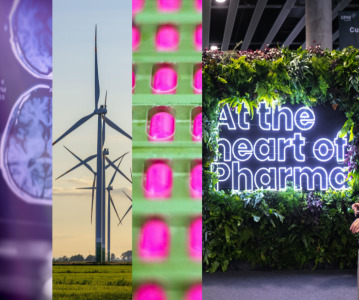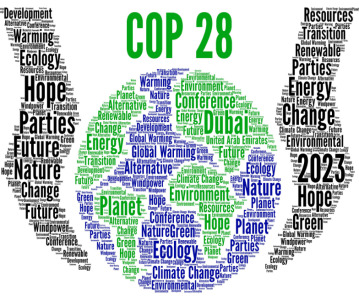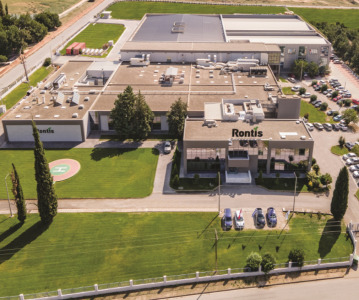Calculating Scope 3 Greenhouse Gas Emissions
The third in a quarterly series of blog posts about responsible supply chain management from the PSCI Chair, Caroline O'Brien
This month we should have been celebrating the success of the 26th meeting of the Conference of the Parties to the United Nations Framework Convention on Climate Change, also known as COP26. This would have been an important step in bringing governments, businesses, and NGOs together to accelerate action for a sustainable low carbon future.
This would have been an important step in bringing governments, businesses, and NGOs together to accelerate action for a sustainable low carbon future.
However, like so many others during 2020, the conference was postponed until next year. But the climate has continued to change, greenhouse gas (GHGs) emissions in the atmosphere have continued to increase, and global temperatures have continued to rise. Even within the context of the current pandemic, this issue has remained visible in the media and public consciousness, despite other priorities.
The key tenet of COP26 would have been in the pursuit of action on The Paris Agreement and its aim to keep the global temperature rise well below 2oC degrees above pre-industrial levels. In fact, experts are now recommending we need to go further, and limit rises to 1.5oC degrees. This will require net zero CO2 in the second half of this century. But the long-lived nature of many GHGs and the scale of this challenge requires action now.
At the PSCI, we seek to support our members’ responses to climate change. Promoting good environmental practices are enshrined in our Principles for responsible supply chain management, and so we are proud to have launched our guidance for the pharmaceutical industry on calculating GHG emissions, available to our 45 members and thousands of their suppliers.
Over the years, the targets and rhetoric have changed and the interest from governments, NGOs, and business has ebbed and flowed, but the rising threat from our changing climate has remained constant. Today, the associated risks are as high on the business agenda as I can ever recall. As a result, there is pressure on business to measure, manage, and reduce their contribution to climate change. Many companies have completed the process of measuring and reporting emissions of GHGs from their own operations – so-called scope 1 and 2 emissions - and as a result have put in place robust reduction programs. That includes a lot of great work by pharmaceutical companies within our membership to reduce emissions with many having made huge commitments and are now investing billions of dollars in energy efficiency and renewable energy initiatives.
More and more these commitments are also including a third scope – those indirect emissions that occur in a company’s value chain, upstream or downstream from own operations. We estimate for the pharmaceutical sector, these emissions are almost 10 times higher than the emissions generated by a company’s own operations. So, if we are serious about climate change, then scope 3 emissions cannot be ignored. While a company may not be able to directly control these emissions, it is hard to argue that they do not have an influence. That is where the PSCI seeks to help.
A first step is to measure and understand emissions from activities within the value chain, particularly those from suppliers that manufacture the goods and services we use. Again, we estimate that this accounts for over half of scope 3 emissions in our sector. But pharmaceutical companies have large and complex value chains, so establishing a measurable baseline against which to track emissions reduction can be a complex, time consuming, and difficult process.
Recognising this, our guide to calculating Scope 3 emissions seeks to help our members and their suppliers calculate their ‘footprint’ and prioritise activity in a consistent, pragmatic, and robust way. The guide is aligned with the GHG Protocol and offers useful and accessible advice for companies just getting started, as well as those with more advanced measurement capabilities. Our aim for the guide is not to say, “this is the way it should be done,” but to offer a straightforward common-sense approach that frees up our members to focus their energy on identifying areas for action and collaboration with suppliers to develop emissions reduction initiatives.
We’re pleased to add this guide to our wider set of environmental and climate-focused resources—including our recently delivered supplier capability trainings in China and India—to help the pharmaceutical industry promote responsible supply chain practices in this critical environmental area.
Caroline O’Brien
Global Quality Audit, AsiaPac Director, AstraZeneca and Chair, PSCI
About the PSCI:
The PSCI: Creating a better supply chain in the pharmaceutical and healthcare industry.
The Pharmaceutical Supply Chain Initiative (PSCI) is a group of pharmaceutical and healthcare companies who share a vision of better social, health, safety and environmental outcomes in the communities where we buy.
We believe that collectively PSCI members can share knowledge and expertise, across our industry, to drive complex, global change more effectively than any one organization alone. We have joined forces to promote responsible supply chain management and better business conditions across the industry.
Related News
-
News 5 big pharma companies agree to decarbonise operations in China
Following extensive talks, leading pharmaceutical companies sign an agreement to work with renewable energy companies to decarbonise their manufacturing supply chains in China and switch to renewables. -
News CPHI Podcast Series: The 2023 Retro – what have we learnt from the past year in pharma?
Welcome to the last episode of 2023! Digital Editor Lucy Chard is joined by her teammates in a special retrospective episode to close out the year. Guests Vivian Xie, Editor for CPHI Online and Tara Dougal, Content Director for Pharma, discuss their hi... -
News Pharmaceutical industry supports COP28 health stance in joint statement
As COP28 takes place over this week in Dubai, UAE, several bodies in the pharmaceutical and health industries have come together to announce support of key movements in sustainability in the sector, and to recognise sustainability as a health issue.&nb... -
News CPHI Barcelona 2023 – From the Floor
It's that time of year again - the biggest pharma event of the year comes to Spain this October for CPHI Barcelona 2023. Follow our Editors Vivian Xie and Lucy Chard as they worked their way through the conference, bringing highlights from content ... -
News CPHI Barcelona Annual Report illuminates industry trends for 2024
The CPHI Annual Survey comes into it’s 7th year to report on the predicted trends for 2024. Over 250 pharma executives were asked 35 questions, with their answers informing the industry landscape for the next year, spanning all major pharma marke... -
News CPHI Barcelona Sustainability Partner Interview – Procaps' improvement through innovation
Procaps, developer of pharmaceutical and nutraceutical solutions, medicines, and hospital supplies that reach more than 50 countries in all five continents, has partnered with CPHI Barcelona to support sustainability initiatives, to be highlighted at t... -
News The future of robotics in pharma: drug discovery to manufacturing
Robotics are starting to play a key role in the discovery and manufacturing of health and drug products, with numerous benefits, from cost reduction to increased sustainability, but there are challenges as well. -
News CPHI Barcelona Sustainability Partner Interview – Rontis' mindful management
Rontis Corporation, a leading supplier in the healthcare industry worldwide, has partnered with CPHI Barcelona to support sustainability initiatives, to be highlighted at the CPHI Worldwide event in Barcelona in October 2023.
Position your company at the heart of the global Pharma industry with a CPHI Online membership
-
Your products and solutions visible to thousands of visitors within the largest Pharma marketplace
-
Generate high-quality, engaged leads for your business, all year round
-
Promote your business as the industry’s thought-leader by hosting your reports, brochures and videos within your profile
-
Your company’s profile boosted at all participating CPHI events
-
An easy-to-use platform with a detailed dashboard showing your leads and performance







